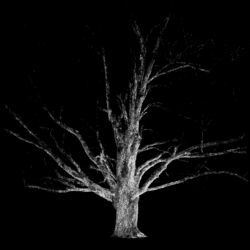Charity and the Internet
The Federal Court of Appeal’s jurisdiction over the Income Tax Act makes it the principal Canadian court that rules on the meaning of “charity”. Over the last two decades the Court has consistently held that its principal point of reference for deciding the scope of the fourth head of charity-purposes “beneficial to the community”-will remain the 1601 Statute of Charitable Uses.1 It has also given a broad reading to the rule that “political purposes” cannot be charitable. [(1994), 12 Philanthrop., No. 4, pp. 3-32] These two approaches have meant that claims for new charitable purposes generally fail; indeed only Native Communications Society of British Columbia v. Minister of National Revenue 2 has demonstrated anything resembling a bold or imaginative approach.3
Against this background the decision in Vancouver Regional FreeNet Association v. Minister of National Revenue 4 is quite surprising, as the Court held, by a 2-1 majority, that the provision of free access to the Internet was a charitable purpose. The Vancouver Regional Freenet Association (VRFA) is a nonprofit organization incorporated under the Society Act of British Columbia, principally for the purpose of establishing and operating a “FreeNet community computer utility” in the greater Vancouver area. A FreeNet is a local community volunteer-based network, which provides free access to the Internet, makes local information available online, and runs a free e-mail service for those who wish to register. There are a number of them in Canada, and this was not the first occasion on which Revenue Canada had refused them charitable status.5 The refusal in this instance was on two principal grounds: First, while it found an analogy between a free electronic information base and a public library “compelling”, the Department stated that there was “no clear judicial precedent to recognize networks, electronic or otherwise, and in particular computer networks, as charitable”. Second, and in response to an argument that the FreeNet served as a kind of “electronic community centre” and should be charitable because “physical” community centres were so regarded, Revenue Canada argued that the FreeNet was not like a community centre because it provided for the exchange of information; because the VRFA did not control the content of the information base; and because its e-mail service could be used for both public and private purposes.
The Ministry also suggested that the FreeNet was more like a radio or TV network than a community centre, and such networks were not charitable.
In the Court of Appeal Hugessen J.A., Pratte J.A. concurring, shortly concluded that the VRFA was pursuing a charitable purpose. He began with the Court’s familiar review of principles derived from, and cases decided pursuant to, the Statute of Charitable Uses. He then noted that the purposes listed there included the repair of bridges and highways, “the essential means of communication” in the Elizabethan period, and held that by analogy the “information highway” could be considered charitable in 1996. Later, and in the same vein, he stated that the purpose of providing “public access for the inhabitants of the lower mainland of British Columbia to the modern information highway” was “as much a charitable purpose in the time of the second Elizabeth as was the provision of access by more conventional highways in the time of the first Queen of that name”. Rather strangely he stated elsewhere that “I do not want to insist unduly on the analogy to the information highway”, and despite not offering any other analogy or any other rationale, asserted by way of conclusion that “there is absolutely no doubt in my mind that the provision of free access to information and to a means by which citizens can communicate with one another on whatever subject they may please is a type of purpose similar to those which have been held to be charitable”. Revenue Canada’s concern that the VRFA did not control the content was dismissed as irrelevant, as an argument confusing the medium with the message. It was not any particular content that was argued to be charitable, but the provision of access to the system.
DeCary J.A. ‘s dissenting judgment was based on his concern that the VRFA was not exclusively charitable. That is, he conceded that providing “affordable and universal access to the information highway” and other “information services” were “of great public utility” and were, indeed, “charitable purposes”. But he was not able “to conclude that the appellant would have restricted its activities exclusively to the aforementioned charitable purposes”. While the reasoning is not altogether clear, DeCary J.A. seems to have been concerned that the FreeNet would not be limited to providing a “restricted range of public interest services”, whatever they may be. Rather, users of the FreeNet had access to any and all information on it, including, potentially, political and commercial information. Since the FreeNet could “provide a platform for the expression and promotion of private interests” it was “outside the purview of a purely charitable purpose”.
Of the two judgments in Vancouver FreeNet, the majority decision is preferable. While the analogy to highways may be strained, there is something to be said for other arguments noted but not seriously considered in the majority judgment, i.e., that the Internet is both like a library and capable of serving as a kind of electronic community centre. These offer more functional rationales than the analogy to highways, although they still rely on precedent. Furthermore, I would like to see less reliance on the 1601 Statute and more attention paid simply to the usefulness and importance of Internet access for all, particularly those who cannot otherwise afford it. While the result is probably a good one, even were it not, DeCary J.A. ‘s reasons for dissent miss the point entirely. If there is a charitable purpose here it is in the provision of access to the system-the free in FreeNet-and has nothing to do with what is on the system. Thus to concentrate on the content of the information available is to ignore the principal argument. In any event, the fact that some individuals may benefit from a charitable purpose does not make it noncharitable. Individuals benefit from the provision of health care, for example-by receiving it and by being paid to provide it-but providing nonprofit health care is charitable because the advancement of health is a charitable purpose. Likewise providing “free” health care is charitable even if some recipients could afford to pay for it. Making the service available to all is the public benefit under this head, or should be. Charitable status was not promoted as a form of “relief of poverty”. Similarly, here the issue is whether providing free access is of sufficient public utility to qualify. Indeed, one might say that the very lack of restrictions about what could go into the system obviates any danger that it would be captured by any particular political or commercial interest.
If we step back from the substance of the judgments in Vancouver FreeNet and return to the more general considerations with which this note began, there is less reason to be optimistic. Broadly speaking one can discern two interpretive approaches employed by courts in England and Canada when considering the scope of the fourth head of charity. One is to argue by analogy, to find purposes to be charitable only if they can be said to be analogous to those in the Statute of Charitable Uses. The other is a more liberal approach, perhaps best described as one rooted in the notion that courts should keep the meaning of charity “moving” in response to “new Social needs” .6 In Vancouver FreeNet the majority decision appears to be rooted in the analogy method which, while it yielded the right result here, will not demonstrate much innovation. That is, there is nothing in this case which will change the picture of Federal Court jurisprudence painted at the beginning of this note. In contrast, DeCary J.A.’s dissenting judgment rejected the analogy approach but, ironically, not on the grounds that it was too “restrictive”-the reason it has been rejected by the English courts-but for precisely the opposite reason-“social needs may become obsolete or satisfied [and]…what was charitable in the past is not necessarily charitable in the present age”. To the same end DeCary J.A. would limit severely the scope of any more general “social utility” standard. He stated: “there is no Canadian authority for the principle that all purposes which in some way benefit the community are presumed to be charitable”. More significantly, he then argued that extensions of the fourth head of charity should occur “only in the most meritorious of circumstances”. This is a high standard. Thus neither in the majority judgment nor in the dissent is there any suggestion of a change in the general approach of the Court.7
Cy-Pres
Two recent British Columbia cases suggest that the courts in that province at least will bend over backwards to employ cy-pres to maintain gifts for charitable purposes. In Lund Estate v. British Columbia& John Lund left money in trust to create a scholarship fund “for the benefit of a deserving student or deserving students of the Tofino High School for the purpose of furthering their education at a University in British Columbia”. No Tofino High School ever existed; the school in Tofino catered to different grades at different times, but it never went past grade 10 at any time and by the time of the testator’s death went only to grade 7. As this was a case of initial rather that subsequent failure-the gift never took effect-the issue for the Court was whether Lund’s will showed a general charitable intent in order that the trust could be applied cy-pres. Of course, haq it been a case of subsequent failure, i.e., failure after the gift had vested in charity, cy-pres would have been automatic.9
Baker J. found such intent, relying in part on the structure of the will: Lund had devoted his whole estate to the trust and no residuary beneficiary had been named. The Court also used extrinsic evidence, testimony of two of Lund’s friends to the effect that he wished to help young people from the area to attend university. Thus the trust was applied cy-pres for the benefit of students at the high school in nearby Ucluelet, the one usually attended by students from Tofino.
Baker J.’s decision is probably the right one, as it would have flown in the face of the testator’s clear intentions to have his estate go to distant relatives on an intestacy. The evidence of general charitable intention is thin-no other charitable bequests were made-but it is probably sufficient. (If a “gift over” directs the legacy elsewhere on failure of the gift to the charity, then the substitution is made and no question arises about charitable intent.) And although the Court did not note the fact, its decision is consistent with a line of cy-pres cases involving institutions that did not exist at the time the gifts took effect. Generally, it is easier to find general charitable intent where the institution never existed than when it did at one point exist but ceased to do so before the will took effect. In the former case the courts use the testator’s ignorance to infer that the intention was to benefit the purpose for which the mythical institution was deemed to exist, and thus find a general charitable intent. In the latter case the very specificity of the gift, the fact that the testators turned their minds to the specific institution, is employed to conclude that the intent was quite specific.10 Whether this always makes sense or not, Lund is consistent with this general approach. On only one point does the decision in Re Lund seem less than entirely correct. The Court acknowledged that its disposition would permit students from outside the Tofino area to benefit, but thought this was “unobjectionable” as “use of the bequest to benefit students from the Tofino and Ucluelet area comes sufficiently close to the original terms of the bequest”. That may be, but the cy-pres scheme chosen could easily have been “students from Tofino attending the Ucluelet high school”. Perhaps there were difficulties in defining boundaries, but none are mentioned in the judgment.
The second recent case, Re Buchanan,11 also involved a beneficiary that did not exist, and its reasoning is rather more questionable. Robert Buchanan left, on condition of events that did occur, over $1 million to the Loyal Protestant Home for Children, New Westminster, British Columbia. There had never been such a legal entity, although the Loyal Protestant Association had operated a home for indigent orphaned children in New Westminster. The first issue was therefore whether the legacy could be construed as one to the Association to be used for its purposes. Not unreasonably, Hogarth J. held that it could be so construed, and there the matter would have ended, without the use of the cy-pres doctrine,12 had not the Association closed the home in 1983, not operated any similar facility thereafter, and devoted its resources to broader, though still generally charitable, objects. This rendered the trust impossible to carry out. (The judge instructed counsel to return to him with proposals for the funds consistent with the charitable intention to benefit orphans.)
Hogarth J. was able to find a general charitable intention despite the fact that this was a case where an institution had once existed but ceased to do so before the will went into effect and despite the lack of any extrinsic evidence such as that used in Lund Estate. The only criterion employed was that the testator had not provided for a gift over in the event of failure of the trust.13
Yet, as already noted, in a case of initial failure the gift over would operate whether or not there was general charitable intention, and so its absence can hardly be used as a reason for finding that intention; it merely makes the search for the intention possible. An appreciation of the approach in this case can be garnered from Hogarth J. ‘s use of, or perhaps reliance, on an alleged principle that “the law will always uphold a gift for charitable purposes where at all possible”. Absent a gift over, it is always possible. If judges are to find general charitable intention on facts like this, it is tantamount to abolishing the distinction between initial and subsequent failure in the law of cy-pres. Re
Buchanan effectively says that failed charitable purposes will be applied to other charitable purposes unless the creator of the trust has mandated otherwise.
FOOTNOTES
1. 43 Eliz. 1, c.4.
2. (1986), 23 E.T.R. 210 (F.C.A.).
3. See E. Zweibel, “A Truly Canadian Definition of Charity and a Lesson in Drafting Charitable Purposes” (1987), 7 Philanthrop. No. 1, pp. 4-11.
4. Unreported, 8 July 1996, F.C.J. No. 914.
5. National Capital FreeNet Incorporated was turned down in 1993 and presumably others have met the same fate.
6. The quoted words are from the judgment of Lord Wilberforce in Scottish Burial
Reform and Cremation Society v. Glasgow Corporation, [1968] A.C. 138 (H.L.), in which he stated that the requirement of being “within the intendment of the preamble…does not mean quite what it says”, because “it is now
accepted that what must be regarded is not the wording of the preamble itself,
but the effect of decisions given by the courts as to its scope, decisions which have endeavoured to keep the law as to charities moving according as new social needs arise or old ones become obsolete or satisfied”. See also Incorporated Council of Law Reporting for England and Wales v. Attorney-General [1972] Ch. 73 (C.A.).
7. The Court’s conservative attitude was reinforced in another decision rendered in 1996. Vancouver Society of Immigrant and Visible Minority Women v. Minister of National Revenue, unreported Federal Court of Appeal judgment, March
6, 1996, [1996] F.C.J. No. 307. The next “Legal Developments” will discuss this case.
8. (1995), 10 E.T.R. (2d) 252 (B.C.S.C.).
9. Unless, of course, the testator had provided for an alternative disposition of the trust in the event of failure: see Re Fitzpatrick (1984), 6 D.L.R. (4th) 644 (Man. Q.B.).
10. See Re Spence, [1979] Ch. 483.
11. (1996), 11 E.T.R. (2d) 8 (B.C.S.C.).
12. For the distinction between construction of an intended beneficiary of a will and the use of cy-pres see the discussion of Re Muir Estate in “Legal Developments” (1996), 13 Philanthrop. No. 3, pp. 35-36.
13. Hogarth J. did refer to another factor, although he did not rely on it to any great degree. He distinguished the case before him from another recent case, also involving the Loyal Protestant Association, in which cy-pres had been refused. He stated that the two cases were different because the judge in the previous case did not know “that the Association continued to distribute funds for charitable and altruistic purposes”. Given that Hogarth J. had already decided that the gift could not go to the Association, this factor can hardly be relevant.
JAMES PHILLIPS
Faculty of Law, University of Toronto


